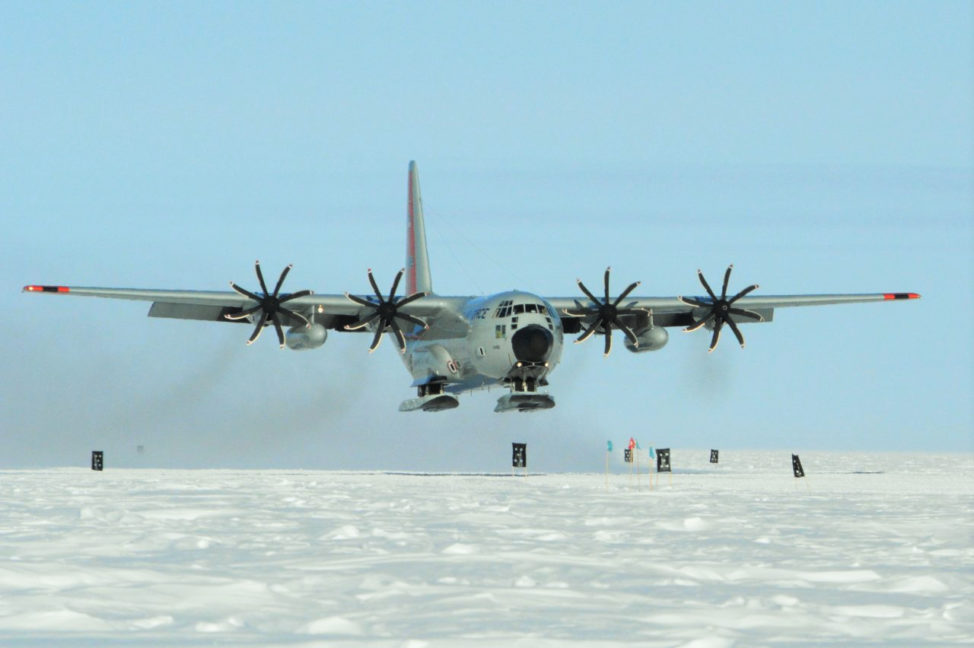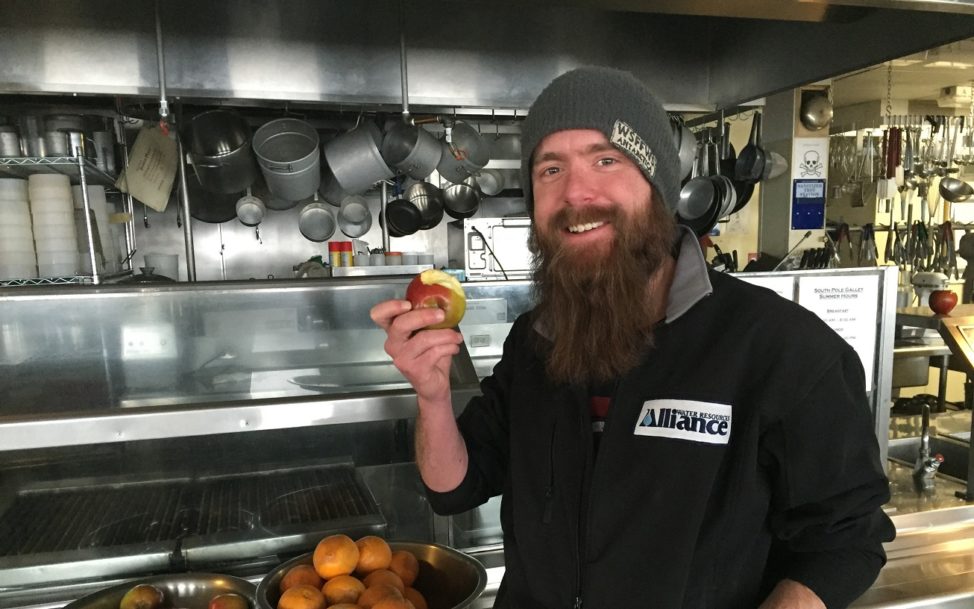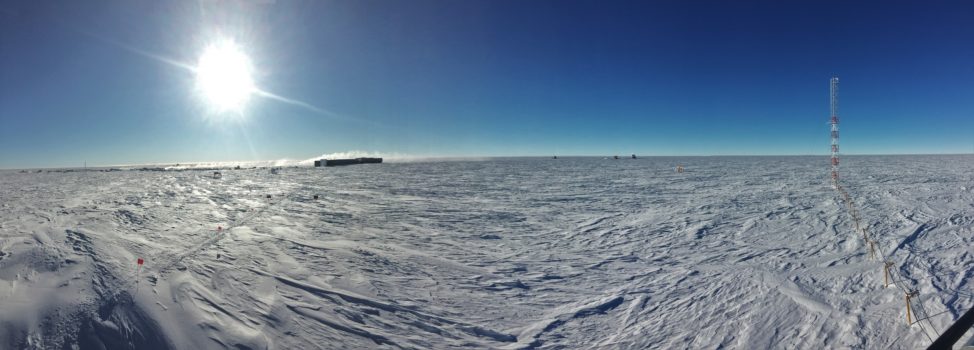After a week of high winds, blowing snow and general pea-soup conditions, the weather cleared. The sun emerged from its temporary hibernation in a fortress of grey steely clouds, and our ice-crusted visibility markers slowly thawed under an uninterrupted bombardment of photons, screaming through the sky like kamikaze pilots in search of martyrdom.
Our miraculous transformation from a frozen purgatory to a serene, blue-jay summer day took little more than 12 hours. Had I not been asleep, it would have been impressive sight to behold.

The first C130 of the season requires 5 kilometers of visibility, low cross winds and temperatures above minus 50 Celsius. If conditions change during the flight, the plane will “boomerang” back to McMurdo.
With unrestricted visibility across the Antarctic plateau, “mild” temperatures and a wind softer than a cotton ball’s kiss, the first planes bearing passengers and fresh fruit arrived. New heavy equipment operators—eager to push snow; new utility technicians—filled with an unbridled excitement to fix broken boilers; men without beards; men with professional haircuts and authentic tans; new blood, innocent blood—ready to pick up our slack, replace us and send us packing. “Civilization, here we come!”
Fresh fruit
The apples are fresh and crunchy. They are harder than what I remember. It’s been 9 months since our last delivery, and biting into their firm flesh is nearly as gum-torturing as flossing after a month of foregoing anything related to oral hygiene. I don’t care. The pain is sweet and is drowned out in the perfect natural sweetness and robust texture that can only be found in those divine earthly creations that derive their nourishment from dirt, water and sun.

Bill Lindman, the South Pole Station’s winter water plant manager, enjoys his first piece of fresh fruit of the year.
They say an apple a day keeps the doctor away, but with these new “plague”-carrying South Pole workers, I’ve upped the ante to three apples and a daily mega-dose of vitamin C. Not only has it been 9 months since I’ve indulged in the merriment of masticating on “freshies,” it’s been an equal length of time since I’ve been exposed to new viruses—coughs, sneezes, colds and chills. The Antarctic Crud, uncaring and fierce, waits in ambush at every handshake, doorknob and galley table.
Crash course on daily duties
Alas, as much as I’d like to hide in my germ-free room until my plane arrives, I cannot. For me, with my replacements on station, it is a hectic time. The next week will be a whirlwind of 10 hour days of training and “pass-down.” Standard operating procedures for each instrument need to be refined, administrative tasks explained, the inner workings of each experiment outlined and illuminated—in short, all the nuances of my job. The fine details of my day-to-day duties need to be translated from an abstract gibberish that makes sense inside my neurotic brain into cohesive instructions that the new Station Chief and Station Technician can absorb, remember and act on.

Unstable weather is common during station opening. A perfectly clear and windless day is a real rarity.
How does one compress a year’s worth of knowledge into a week of overlap? It’s no easy task and after two days of hitting it as hard as a baseball player on steroids, I realize that there is no way I can cover everything. I can take them halfway there and that’s it. An extreme experience awaits them, as it did for me and all my predecessors at the Atmospheric Research Observatory. The days will be cold, the nights eternal and equipment will break. They will suffer through a long 12 months, love each moment of it and ensure the Global Monitoring Division’s mission continues successfully for another year.






















Comments are closed.